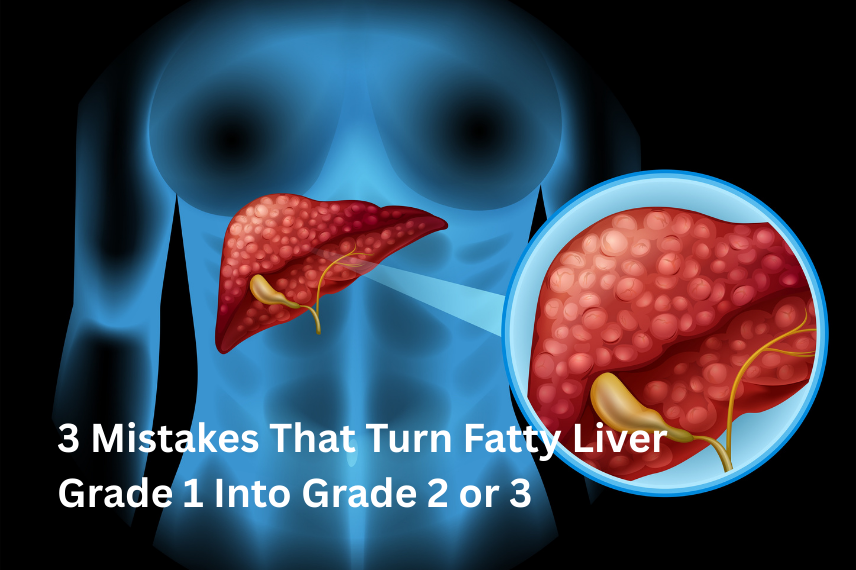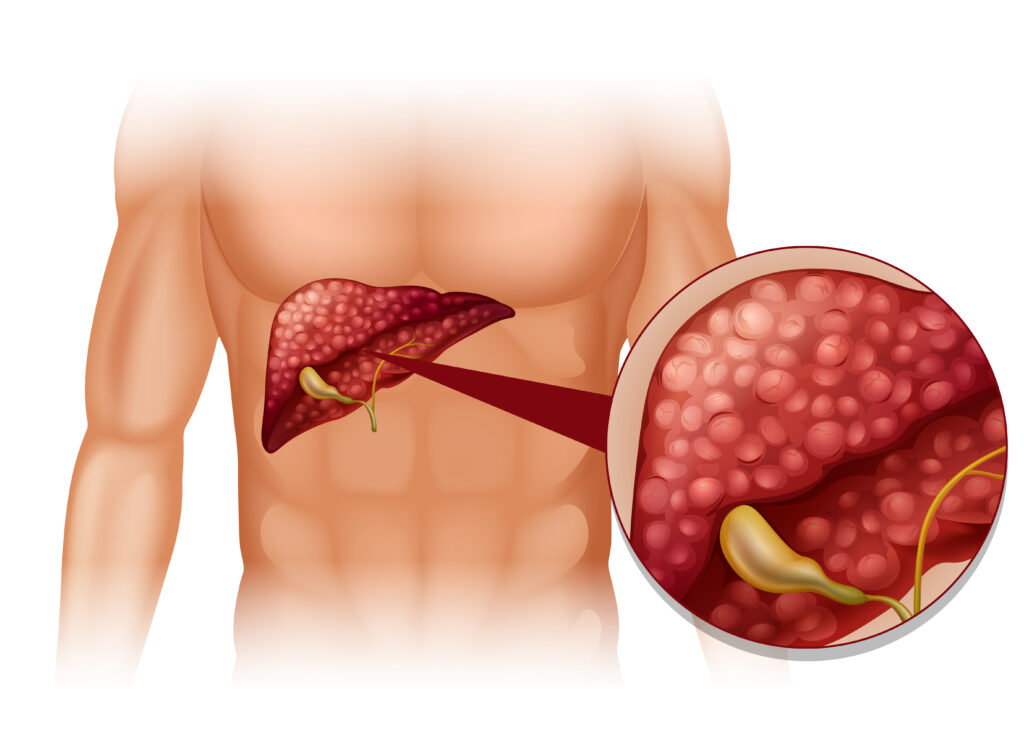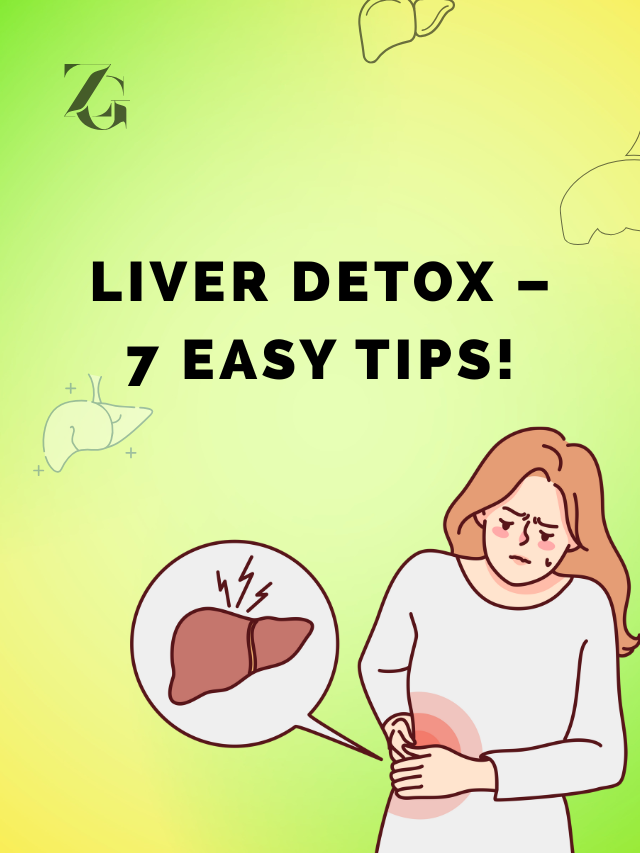
Fatty liver disease affects one in three adults globally, making it a growing health concern that demands immediate attention. While Grade 1 hepatic steatosis is often reversible, simple mistakes can escalate the condition to more severe stages. Understanding these critical errors can help you prevent progression and restore your liver health naturally.
- Understanding Fatty Liver Disease Progression
- Recognizing Fatty Liver Disease Symptoms
- Mistake #1: Following a Poor Diet High in Processed Foods
- Mistake #2: Living a Sedentary Lifestyle
- Mistake #3: Ignoring Underlying Health Conditions
- Advanced Fatty Liver Disease Treatments
- The Path to Liver Recovery from Hepatic Steatosis
- When to Seek Professional Help for Fatty Liver Disease
- Conclusion: Taking Control of Your Liver Health
Understanding Fatty Liver Disease Progression
Fatty liver disease occurs when fat accumulates in liver cells, creating what medical professionals call steatosis of liver. This condition primarily manifests in two forms: alcoholic fatty liver disease (AFLD) and nonalcoholic fatty liver disease (NAFLD). The encouraging news is that Grade 1 hepatic steatosis of the liver has the highest chance of reversal when proper measures are taken promptly.
Non alcoholic steatosis is particularly common among people who consume little to no alcohol, yet still develop fat around liver cells. Without intervention, the condition can progress through three stages:
- Grade 1: Mild fat accumulation (5-33% of liver cells affected)
- Grade 2: Moderate fat accumulation (34-66% of liver cells affected)
- Grade 3: Severe fat accumulation (over 66% of liver cells affected)
Left unchecked, severe diffuse fatty infiltration of the liver can eventually lead to cirrhosis and may require liver transplantation.

Recognizing Fatty Liver Disease Symptoms
Before diving into the critical mistakes, it’s important to understand fatty liver symptoms that may indicate disease progression. Fatty liver disease symptoms can be subtle in early stages, but may include:
General Fatty Liver Symptoms:
- Persistent fatigue and weakness
- Abdominal discomfort or pain in the upper right side
- Unexplained weight loss or gain
- Loss of appetite
Fatty Liver Symptoms in Females:
Women may experience additional symptoms including:
- Hormonal imbalances
- Irregular menstrual cycles
- Increased abdominal weight gain
- Insulin resistance symptoms
Hepatic Steatosis Symptoms:
As the condition progresses, hepatic steatosis symptoms may become more pronounced:
- Enlarged liver (hepatomegaly)
- Elevated liver enzymes
- Jaundice (yellowing of skin and eyes)
- Swelling in legs and abdomen
Mistake #1: Following a Poor Diet High in Processed Foods
The Problem
The most significant factor accelerating fatty liver disease progression is consuming foods that directly contribute to hepatic steatosis. Research shows that added sugars, refined carbohydrates, and ultra-processed foods are primary causes of steatosis in the liver.
Foods That Worsen NAFLD:
- Sugary beverages and sodas
- Refined breads and biscuits
- Processed snacks and chips
- Fast food items like burgers
- Deli meats and processed foods
- Foods high in added sugars
These dietary choices are among the leading causes of steatosis and can rapidly transform mild hepatic steatosis into more severe stages.
The Solution: Effective Fatty Liver Treatment Through Diet
Replace harmful foods with liver-friendly alternatives as part of comprehensive fatty liver treatment:
Adopt a Mediterranean Diet Pattern:
- Fresh fruits and vegetables
- Whole grains instead of refined carbohydrates
- Healthy fats from olive oil and nuts
- Fatty fish rich in omega-3s
- Lean proteins
Studies consistently demonstrate that the Mediterranean diet is one of the most effective fatty liver disease treatments and can significantly reduce diffuse fatty infiltration of the liver.
Mistake #2: Living a Sedentary Lifestyle
The Problem
Physical inactivity is your liver’s biggest enemy when it comes to liver steatosis treatment. A sedentary lifestyle slows metabolism and reduces the liver’s ability to process fat effectively, worsening non alcoholic steatosis. Today’s desk-bound work culture significantly contributes to NAFLD progression.
The Impact of Inactivity on Hepatic Steatosis:
- Reduced metabolic rate
- Impaired fat processing in the liver
- Increased insulin resistance
- Poor circulation affecting liver function
- Accumulation of fat around liver cells
The Solution: Exercise as Fatty Liver Treatment
Implement regular physical activity as a cornerstone of fatty liver disease treatments:
Recommended Exercise Guidelines for Liver Steatosis Treatment:
- Minimum: 150 minutes of moderate exercise weekly
- Alternative: 75 minutes of intense physical activity weekly
- Activities: Brisk walking, yoga, resistance training, swimming
Daily Movement Tips for NAFLD Management:
- Take phone calls while walking
- Use stairs instead of elevators
- Park farther from destinations
- Take regular breaks from sitting
- Consider a standing desk
Even modest weight loss of 5-10% of body weight can significantly reduce hepatic steatosis of the liver and improve fatty liver disease symptoms.
Mistake #3: Ignoring Underlying Health Conditions
The Problem
Certain health conditions act as accelerators for nonalcoholic fatty liver disease progression. When left unmanaged, these conditions create a perfect storm for steatosis of liver:
- Obesity: Excess body weight directly correlates with hepatic steatosis
- Type 2 diabetes: Insulin resistance promotes fat around liver accumulation
- High cholesterol: Contributes to metabolic dysfunction
- Elevated triglycerides: Directly linked to diffuse fatty infiltration of the liver
These are significant causes of steatosis that require medical attention and proper management.
The Solution: Comprehensive Health Management
Take a comprehensive approach to managing underlying conditions as part of fatty liver treatment:
Blood Sugar Management for NAFLD:
- Monitor glucose levels regularly with NAFLD test protocols
- Follow a low-glycemic diet
- Consider natural blood sugar stabilizers
Weight Management for Hepatic Steatosis:
- Set realistic weight loss goals
- Focus on sustainable lifestyle changes
- Track progress with healthcare providers
- Regular NAFLD test monitoring
Cholesterol Control for Liver Steatosis Treatment:
- Reduce saturated fat intake
- Increase fiber consumption
- Consider natural cholesterol-lowering foods
Advanced Fatty Liver Disease Treatments
Coffee Consumption as Natural Fatty Liver Treatment
Research from 2021 shows that drinking coffee daily can serve as an effective fatty liver treatment by:
- Reducing NAFLD risk by 20%
- Decreasing chronic liver disease death risk by 49%
- Providing antioxidants like chlorogenic acid
- Reducing liver inflammation and hepatic steatosis symptoms
Stress Management for NAFLD
Chronic stress contributes to metabolic dysfunction and can worsen fatty liver disease symptoms. Implement stress-reduction techniques:
- Regular meditation or mindfulness practices
- Adequate sleep (7-9 hours nightly)
- Stress-reducing activities like yoga or tai chi
Regular Monitoring and NAFLD Test Protocols
Work with healthcare providers to implement proper NAFLD test schedules:
- Monitor liver enzyme levels
- Track progress through imaging studies
- Regular NAFLD test assessments
- Adjust fatty liver disease treatments as needed
- Address hepatic steatosis symptoms early
The Path to Liver Recovery from Hepatic Steatosis
The good news is that Grade 1 hepatic steatosis is highly reversible with the right fatty liver treatment approach. By avoiding these three critical mistakes and implementing liver-friendly lifestyle changes, you can:
- Halt nonalcoholic fatty liver disease progression
- Reduce diffuse fatty infiltration of the liver
- Improve overall metabolic health
- Eliminate fatty liver disease symptoms
- Prevent complications like cirrhosis
Remember, consistency is key in liver steatosis treatment. Small, sustainable changes implemented daily will yield better long-term results than dramatic short-term modifications.
When to Seek Professional Help for Fatty Liver Disease
Consult with a healthcare provider if you experience persistent fatty liver symptoms or hepatic steatosis symptoms:
- Persistent fatigue
- Abdominal pain or discomfort
- Unexplained weight loss or gain
- Changes in appetite
- Yellowing of skin or eyes
Request appropriate NAFLD test procedures to assess your liver health and determine the most effective fatty liver disease treatments for your specific condition.
Early intervention with proper fatty liver treatment significantly improves outcomes and prevents progression to more severe stages of hepatic steatosis of the liver.
Conclusion: Taking Control of Your Liver Health
Fatty liver disease, particularly nonalcoholic fatty liver disease, doesn’t have to progress beyond Grade 1 hepatic steatosis. By understanding the causes of steatosis, recognizing fatty liver disease symptoms early, and implementing effective fatty liver disease treatments, you can reverse steatosis of liver and restore optimal health.
The key is addressing these three critical mistakes before diffuse fatty infiltration of the liver becomes irreversible. With proper liver steatosis treatment, regular NAFLD test monitoring, and commitment to lifestyle changes, you can successfully manage fat around liver accumulation and prevent hepatic steatosis symptoms from worsening.
Disclaimer: This article is for informational purposes only and is not a substitute for professional medical advice. Always consult your doctor or a qualified healthcare provider with any questions about fatty liver disease, NAFLD test procedures, or appropriate fatty liver treatment options.
FAQ’s
Can grade 3 fatty liver be reversed to grade 1?
Yes, grade 3 fatty liver can potentially be reversed to grade 1 with strict lifestyle changes, a healthy diet, weight loss, and medical supervision. Early intervention improves chances of reversal significantly.
Can fatty liver cause diarrhea?
Fatty liver itself doesn’t directly cause diarrhea, but related conditions like poor digestion, gallbladder issues, or gut inflammation may lead to loose stools in some cases.
Can a Grade 2 fatty liver be reversed?
Yes, grade 2 fatty liver is reversible with timely changes such as eating a liver-friendly diet, exercising regularly, reducing sugar and fat intake, and avoiding processed foods.
Is fatty liver grade 3 serious?
Yes, grade 3 fatty liver is serious. It indicates advanced liver damage and inflammation, which may lead to cirrhosis or liver failure if not managed promptly and effectively.
How to remove grade 1 fatty liver?
To reverse grade 1 fatty liver, focus on losing weight (if overweight), eating a balanced low-fat diet, exercising regularly, avoiding alcohol, and reducing sugar intake.
How to detox fatty liver?
You can support liver detox by eating more vegetables (like leafy greens and cruciferous veggies), drinking plenty of water, avoiding junk food, and including foods rich in antioxidants. However, avoid unproven “liver detox” products.
What is the best diet for fatty liver?
The best diet for fatty liver includes:
- Leafy greens and fiber-rich vegetables
- Whole grains and legumes
- Healthy fats (like olive oil, nuts)
- Lean protein (like fish and tofu)
- Minimal sugar, refined carbs, and fried foods
A Mediterranean-style diet is often recommended.









